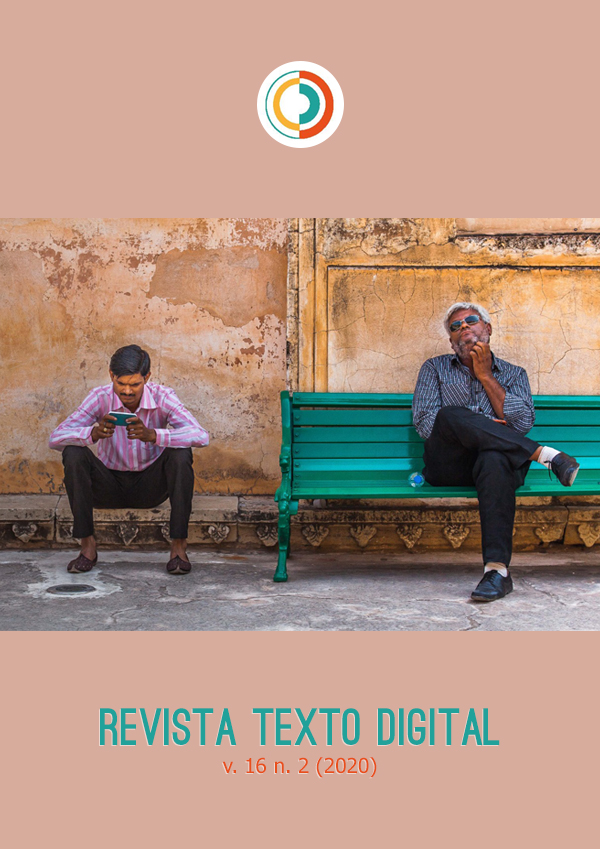Processes of communication and media interaction
the case of the dwarf on the shoulders of a giant
DOI:
https://doi.org/10.5007/1807-9288.2020v16n2p290Abstract
Time and its possible relations with cinema and literature are the guiding thread of this article. Psychosomatic processes can provide us with different sensations and, consequently, different perceptions regarding the passage of time, gaining, in the cinematographic support, a potential for eminent experimentation. This phenomenon can encourage the spectator to move from an extradegetic to an intradegetic plane, giving him an active role in the construction of the narrative. However, this potential is not exclusive to the interactive film and had already been worked on in the literature, by authors such as Jorge Luís Borges and Italo Calvino.
References
CALVINO, Italo. Se numa noite de Inverno um viajante. Lisboa: Editorial Teorema, 2002
CALVINO, Italo. Eremita em Paris: páginas autobiográficas. Tradução Roberta Barni. São Paulo: Companhia das Letras, 2006.
CAVALLARO, Dani. The mind of Italo Calvino: a critical exploration of his thought and writings. Jefferson: McFarland & Company, 2010.
MANOVICH, Lev. Software takes command. New York: Bloomsbury, 2013.
SILVA, B. M., Neblina: notas sobre o projeto Os caminhos que se bifurcam. Revista Texto Digital, v.9, n. 2, dez. 2013. DOI: 10.5007/1807-9288.2013v9n2p3.
WEISS, Beno. Understanding Italo Calvino. Columbia: University of South Carolina Press, 1993.
DELEUZE, Gilles. A Imagem-Tempo. São Paulo: Brasiliense, 1990.
LE POIDEVIN, Robin. Perception and Time. In Mohan Matthen (ed.). Oxford Handbook of the Philosophy of Perception. Oxford: Wiley-Blackwell, Jul. 2015.
Downloads
Published
Issue
Section
License
Copyright (c) 2020 Bruno Mendes da Silva, Susana Costa

This work is licensed under a Creative Commons Attribution 4.0 International License.
Authors who have their works published in Texto Digital agree that:
Copyrights remain with the authors, who grant the journal the right of first publishing their submitted manuscripts. All materials published by the journalare under an Attribution 4.0 International - Creative Commons License, which allows them to be shared since authorship and first publication credits are mentioned.
The Attribution 4.0 International - Creative Commons allows the copy and redistribution of the material in any medium or format, as well as its adaptation for any purpose, even commercially.
Authors can take additional contracts for non-exclusive distribution of the version of their works published by our journal separately (e.g. to publish it in an institutional repository or as a book chapter) with both expressed authorship acknowledgment and Texto Digital’s first publication credit.



